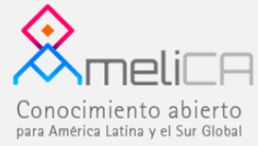PENSAR PARA TRANSFORMAR: RUTAS CRÍTICAS DEL PENSAMIENTO EN LA INVESTIGACIÓN EDUCATIVA
DOI:
https://doi.org/10.56219/dialctica.v2i24.3673Keywords:
Critical thinkingAbstract
This article explores the fundamental role of thinking in research practice, understanding it as a dynamic, complex, and multifaceted process that articulates cognitive, ethical, linguistic, and existential dimensions. Using a theoretical and reflexive approach, it analyzes how thinking processes—critical, logical, creative, and reflexive—not only facilitate the construction of knowledge but also constitute the driving force of research action at different levels of academic training. Thinking is approached as a faculty that allows researchers to formulate problems, construct hypotheses, evaluate evidence, and communicate findings in a rigorous and contextualized manner. Throughout the article, various theoretical conceptions are presented that enrich the approach to thinking. Furthermore, the close relationship between thinking and language is analyzed, as complementary tools for structuring reasoning and facilitating scientific expression. The importance of critical thinking training from the early stages of development is emphasized, promoting skills such as inference, analysis, evaluation of arguments, and informed decision-making. The article concludes by highlighting that critical and reflective thinking is an essential competency for education and research, as it enhances autonomy, creativity, and the capacity for ethical intervention in the face of the challenges of today's world. Therefore, a pedagogy of thinking is proposed that integrates the cognitive, affective, and ethical aspects, enabling researchers not only to understand reality but also to transform it through awareness, dialogue, and action.
Downloads
References
Agazzi, A. (1966). Historia de la filosofía y la pedagogía (Tomo III). Marfil.
Aguilar, E. (2006). Filosofía de la educación. PROPAD. CODEU.
De Bono, E. (2002). El pensamiento lateral. Manual de creatividad. Buenos Aires.
Ennis, R. (1991). Critical thinking: A streamlined conception. Teaching Philosophy, 14(1), 5–24. https://doi.org/10.5840/teachphil19911411 DOI: https://doi.org/10.5840/teachphil19911412
Ennis, R. (2011). The nature of critical thinking: An outline of critical thinking dispositions and abilities. University of Illinois. http://faculty.education.illinois.edu/rhennis/documents/TheNatureofCriticalThinking_51711_000.pdf
Ennis, R. H., & Millman, J. (1985a). Cornell Critical Thinking Test, Level X. Midwest.
Facione, P. A. (2007). Critical thinking: What it is and why it counts (updated edition). Insight Assessment. https://www.insightassessment.com/wp-content/uploads/ia/pdf/whatwhy.pdf
Glaser, R. (1994). Learning theory and instruction. En G. d’Ydewalle, P. Eelen & B. Bertelson (Eds.), International perspectives on psychological science (Vol. 2). Erlbaum.
Izquierdo, E. (2006). Desarrollo del pensamiento. Pixeles.
Jara, M. (2001). Las revoluciones de paciencia o una ciencia revolucionaria. Convergencias y contrapuntos, antes y después de Kuhm. Moebio.
Marías, J. (1949). El método histórico de las generaciones. Revista de Occidente, (12).
Martínez, M. (1999). La nueva ciencia: Su desafío, lógica y método. Trillas.
Owens, R. (2008). Desarrollo del lenguaje. Pearson Educación.
Parra, E., & Lago de Vergara, D. (2003). Didáctica para el desarrollo del pensamiento crítico en estudiantes universitarios. Educación Médica Superior, 17(2). Recuperado de http://scielo.sld.cu/scielo.php?script=sci_arttext&pid=S0864-21412003000200009.
Paul, R., & Elder, L. (1999). Critical thinking: Teaching students to seek the logic of things, part II. Journal of Developmental Education, 23(2), 34.
Pérez Gómez, Á., & Gimeno, J. (1988). Infancia y aprendizaje. El pensamiento y acción en el profesor: De los estudios sobre la planificación al pensamiento práctico (42). Recuperado de http://dialnet.unirioja.es/servlet/articulo?codigo=48302 (Accedido el 20 de febrero de 2012). DOI: https://doi.org/10.1080/02103702.1988.10822201
Perkins, D. N. (1986). Educational leadership. Disponible en http://www.skymonks.com/academic/EDCI_674/perkins/LinkedDocuments/006_ThinkingFrames_1986.pdf (Accedido el 16 de febrero de 2012).
Pizzi, J., & Ghiggi, G. (2008). Diálogo crítico-educativo. Un debate filosófico. Universidade Católica de Pelotas. EDUCAT.
Villarini, Á. (2010). La enseñanza orientada al desarrollo del pensamiento según Eugenio María de Hostos. Alicante: Biblioteca Virtual Miguel de Cervantes
Vygotsky, L. (1995). Pensamiento y lenguaje. Paidós.
Paul, R., & Elder, L. (2003). The Miniature Guide to Critical Thinking: Concepts and Tools (4th ed.). Foundation for Critical Thinking.
Downloads
Published
How to Cite
Issue
Section
License
Copyright (c) 2025 DIALÉCTICA

This work is licensed under a Creative Commons Attribution-NonCommercial-ShareAlike 4.0 International License.
La revista Dialéctica conserva los derechos patrimoniales (copyright) de las obras publicadas, que favorece y permite la reutilización de los mismos bajo la licencia Creative Commons Atribución-NoComercial-CompartirIgual 4.0 , por lo cual se pueden copiar, usar, difundir, transmitir y exponer públicamente, siempre que se cite la autoría y fuente original de su publicación (revista, editorial, URL y DOI de la obra), no se usen para fines comerciales u onerosos y se mencione la existencia y especificaciones de esta licencia de uso. Si remezcla, transforma o crea a partir del material, debe distribuir su contribución bajo la misma licencia del original.











